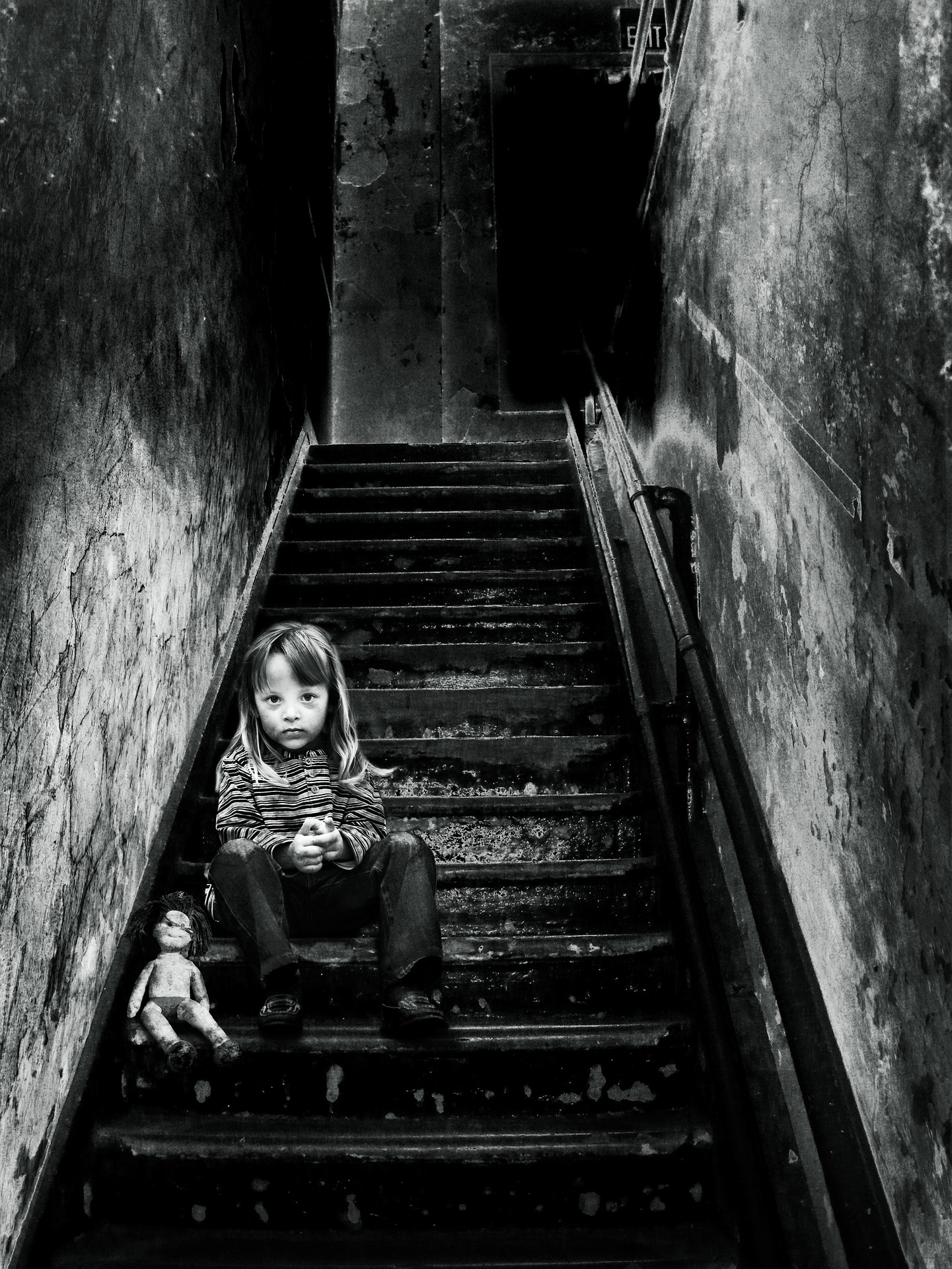
Every one of us experiences abandonment at some point in our lives.
For some of us, the depth of the experience is so intensely traumatic that it becomes our core wound.
A core wound is a deep emotional trauma, often experienced in early childhood.
Because as children we don’t have fully developed cognitive capabilities, we don’t have the capacity to understand all the circumstances surrounding the separation. This lays the groundwork for the development of defense mechanisms that are intended to protect us.
As we grow up, these strategies are relegated to our subconscious mind from where they covertly motivate our thoughts and behaviors.
This is a functional approach to ensure our survival, but the reality is that it colors our perception because we are looking at the world through the filter of our unresolved trauma.
For me, this core wound is abandonment.
I was quite literally abandoned in a church after my birth. I was adopted within a few months, so I have no conscious recollection of that experience. And yet, I lived most of my life terrified of being abandoned or left behind by others. And, ironically, terrified of getting emotionally close to people in fear of the pain I would experience if they abandoned me.
Abandonment issues, be it physical or emotional, are commonly discussed in personal development circles. Yet, I’ve noticed that some characteristic indicators of abandonment trauma are not often discussed.
Identity
Abandonment has a major impact on the development of a child’s identity.
The natural course of life is that we are born into a family or tribe and raised in an environment where it is understood that we belong. This experience provides a sense of safety. There are indelible ties between you and those who surround you. Throughout our development we are able to establish our identity based on what we have in common with our family and what we don’t.
For those of us who were abandoned, those ties are damaged, or in some cases, completely severed—which can leave us in a sort of limbo because we don’t know where we fit in this world.
Even when raised in a loving adoptive, foster, or step home, we cannot help but wonder about those ties—sometimes for simple things like knowing who we look like. And other times in the hopes of understanding why. Why we were discarded. Why we were not wanted. Why we weren’t enough.
These questions and doubts feed the creation of detrimental core beliefs that we can carry throughout our adult lives.
Emotional Devastation
Feeling abandoned and rejected is always hard. Yet they are both a part of life.
An emotionally intelligent adult can navigate the ebbs and flows of interpersonal relationships without it dramatically impacting their sense of self, their self-worth, or long-term mood.
But for someone with abandonment trauma, it is more than a hurt ego or hurt feelings.
Abandonment can continue to evolve and branch out into other types of trauma. For example, fear of rejection.
While these are two distinct wounds, it is fair to say that those of us with abandonment trauma also have rejection trauma, because abandonment, at our core, is often perceived as a rejection.
The relationship between these two wounds is not entirely symbiotic. You can have rejection trauma without abandonment trauma. But, if you have abandonment trauma, you almost certainly have rejection trauma as well.
When someone suffers abandonment in childhood, the break and betrayal of that natural bond is scary and a threat to our survival.
Instead of believing that our caretakers are flawed and could not or didn’t want to take care of us, we develop a subconscious belief system that shifts the responsibility onto us, the child.
So we create beliefs that we are not enough, not worthy, not lovable.
Because if it is about us, then we can fix it and not be abandoned again.
Unfortunately, it doesn’t work that way. Because the very beliefs that we created to protect us in childhood tend to keep us from finding the deep connections we seek in adulthood.
At its essence, the pain of someone with an abandonment wound can be distilled to the belief that the person who was supposed to love you above all else, to protect you, to prioritize you…the person you “belonged to” and are a part of, didn’t choose you, didn’t love you enough.
This does not mean it is true. But it is what we believe, deep down.
So, we engage in relationships (romantic or otherwise) believing that we are not enough and not worthy of love—which sets in motion unhealthy dynamics that will lead to the very thing we are trying to avoid the most. Abandonment. Disconnection.
This, in turn, is perceived as a reinforcement of the belief that we are not enough. A validation of the original wound. And it can also confirm the fear that we can expect this type of rejection over and over again in our lives.
When these dreaded scenarios happen, we tend to take relationship endings hard.
It often looks and feels like it is harder for us to bounce back from heartbreak than it is for others.
The reason is that we are not just feeling the pain of the specific situation. We are also experiencing the pain of every other previous abandonment or rejection dating back to the original [core] wound. So the pain we are feeling is compounded.
Opportunity for Healing
What I’ve learned in my journey is that trauma and wounds can also bring us wonderful gifts.
In a universe of polarity, it is the pain of abandonment and rejection that can crystalize our soul’s desire for deep, authentic connection.
And there are wonderful gifts buried in the rubble of our core wounds. Deep empathy, capacity for connection, keen intuition.
We develop these skills or gifts as coping strategies to manage the pain of our wounds.
As we heal, we can learn to disentangle those gifts from the trauma. Such that, as we release from the grip of our wounds, we hold on to the gifts, the keepsakes of our experience.
I’ve spent the last decade of my life actively healing my abandonment trauma. And, honestly, I often wonder if it is possible to fully heal from such a primal wound.
But I’ve come a long way.
Because I am so keenly aware that this is my deepest wound, I can [for the most part] navigate painful or triggering situations consciously and with an emotionally intelligent perspective.
I am now able to see connections where before I could only feel reactivity. And my current circumstances are as good an opportunity as any to fine-tune those skills.
Curiously, as I was writing this article, I unexpectedly found my birth mother. This is something I had given up on over a decade ago. So, I am currently unlocking a deeper level of healing.
My hope is that sharing my experience can spark some insight in others and can help in their healing.
As we embark on this journey, gaining awareness and perspective can help us dismantle some of the beliefs that no longer serve us and that are now keeping us from the very thing we want. Because ultimately, the pain of abandonment has served to show us our deep desire for connection.
~
Please consider Boosting our authors’ articles in their first week to help them win Elephant’s Ecosystem so they can get paid and write more.








Read 35 comments and reply